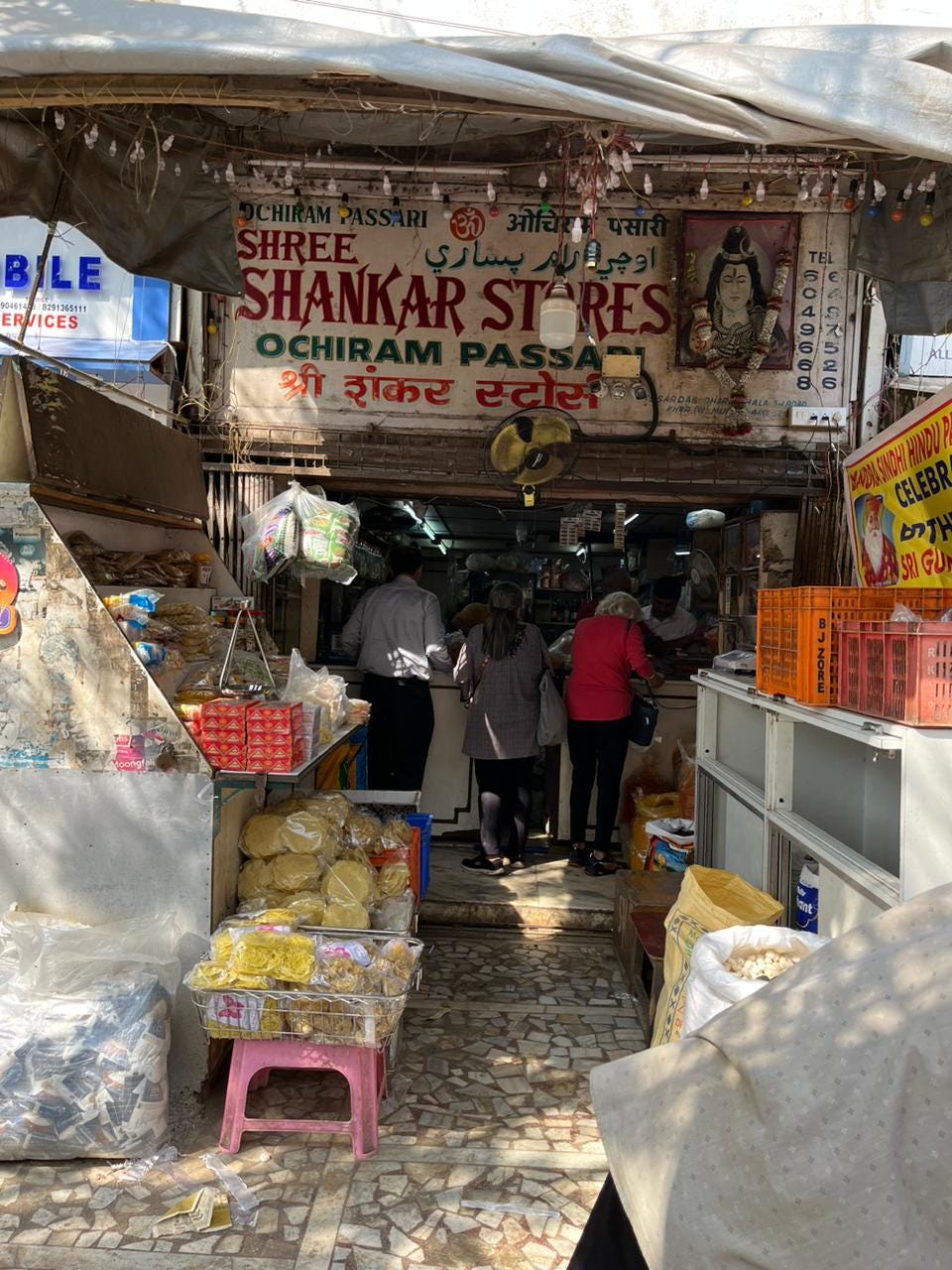Searching for my heritage in a Sindhi corner shop
A trip to a Sindhi corner shop in Mumbai leads to unexpected finds and equally unexpected realisations about my Sindhi identity.
When I first moved to Stoke Newington in 2021, I was moving out of Pimlico, one of London’s poshest and character-less neighbourhoods with its monotone colours and overpriced grocery stores. The beige and cream Georgian houses were replaced by red brick houses, Clissold Park and an abundance of Turkish corner shops. My first few months in Stoke Newington went in exploring each and every corner shop within a five-kilometre radius of my flat. My weekly shopping errands comprised of pedestrian journeys to at least four different corner shops – one for the imported Indian basmati rice, another for a piece of Turkish flatbread bigger than my face, a third for their fresh almonds when in season and the fourth for its immediate proximity to my flat. If you drop me into a Turkish corner shop, I can tell you an estimate of the per kilo cost of fresh olives, where the Ayran is kept and what brand of sunflower seeds is the best for snacking. Though when I was recently in a Sindhi corner shop in one of Mumbai’s suburbs, I was at a loss to identify more than a couple items in the whole store.
My maternal grandparents used to live in Khar, Mumbai and ever since I was a child, I’ve spent summers in Khar with each trip eliciting a long grocery list to be fulfilled by our local Sindhi corner shop. My family swears by Ochiram Pasari’s shops in Khar for all their spices and Sindhi produce needs and to this date visits to Ochi (what the shop is affectionately called in our family) culminate in heavy grain sacks full of cardamom, black peppercorns, dried rose petals, chilli powder, dried lotus seeds, dried moringa flowers and snacks. Ochi has been a fixture of Khar since the 1950s, almost as long as the Sindhi community has called Khar its home. After partition, many neighbourhoods in cities like Mumbai were given off to Sindhi refugees. Khar being one of the neighbourhoods with a decent Sindhi population made it the perfect location for Pasari’s set of twin shops. Since then, Ochi has serviced needs of Sindhi generations past and present who long to eat the food of their ancestors.
As I entered Ochi for the first time in four years, I was immediately welcomed by a container full of fresh lotus roots submerged in water. Lotus roots are a staple food in the Sindhi community and almost every Sindhi has a soft spot for this buttery root which takes on the flavour of the spices it’s cooked in. The lotus roots and lotus seeds are placed just outside the entrance to the shop, kind of like a bat-signal for Sindhi passers-by to come and grab some before they’re all gone. Ochi’s is a small shop with no aisles and one long cashier’s table that is flanked on either side by an assortment of dried snacks, poppadums, lentil dumplings, vegetables, red chillies and then a random assortment of household staples. While there’s not much scope for wandering, you can get your hands on anything you want by interacting with the shop assistants.
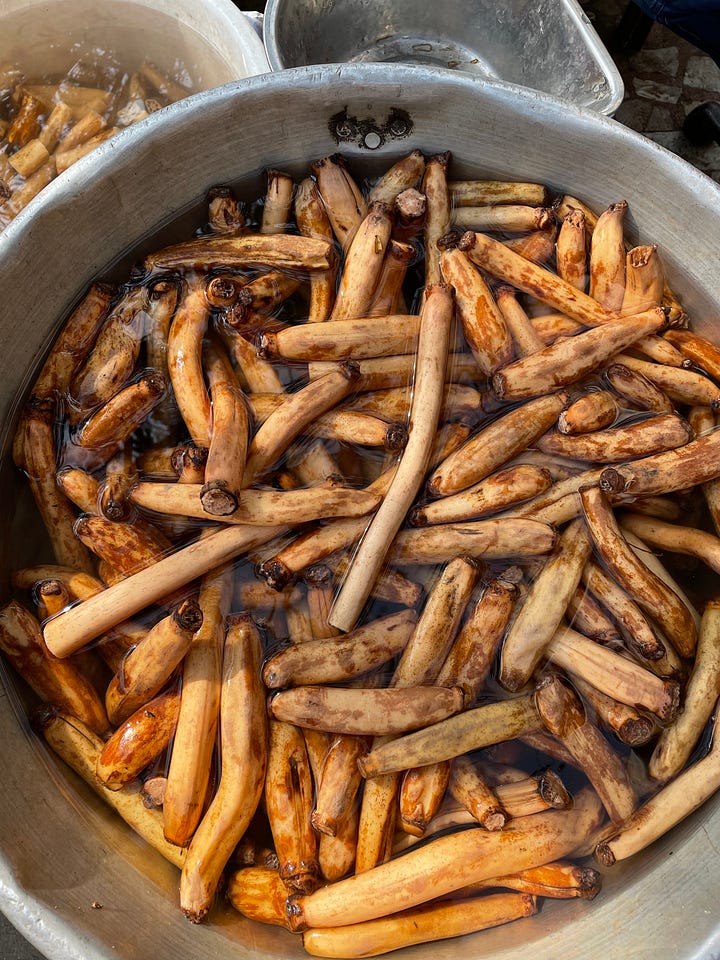
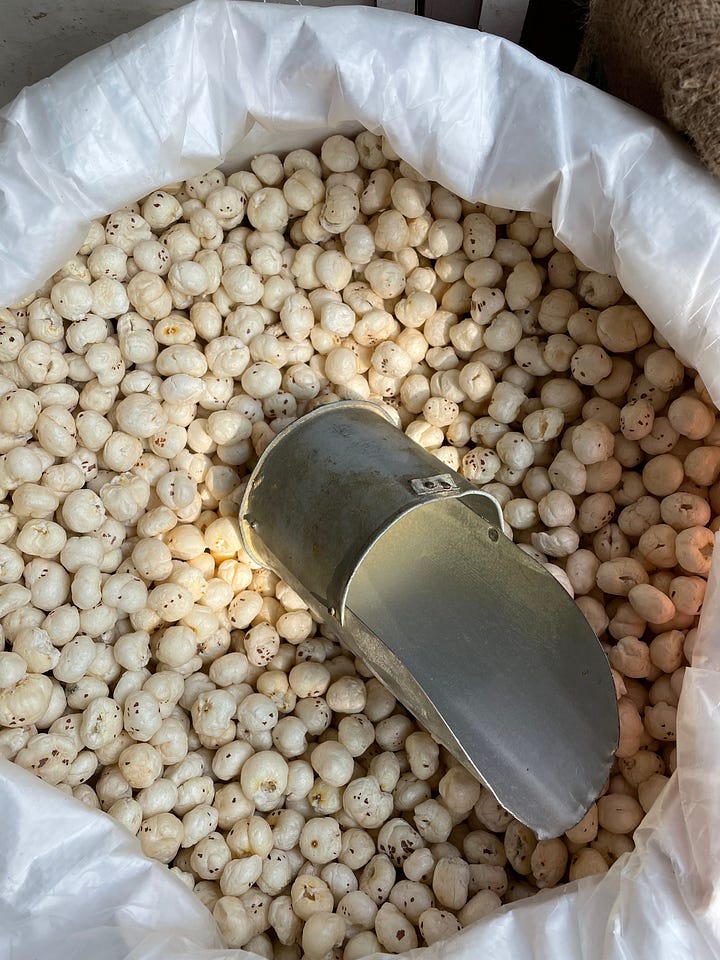
My grandmother filled in the gaps in my knowledge of what’s what in the shop as she identified three different types of poppadums, bags full of dried lotus roots, cluster beans and pointed gourd. Next to the poppadums are snacks made using rice flour that are to be deep fried and eaten alongside Sunday lunches of curry and rice. Ochi also sells a large variety of lentil dumplings called wadi which are usually eaten in a tangy tomato gravy. If Ochi wants you to eat hearty and healthy food, then he makes sure to go the extra mile by stocking traditional Sindhi digestive sweets and tonics to be eaten after a meal involving heavy lentils, chickpea flour and fried snacks. Almost all the items at Ochi’s are locally sourced within Mumbai or from other neighbouring cities like Pune. From lotus roots and moringa flowers to wadi and digestive sweets, every item of nostalgia for older generations of Sindhis has been made in Mumbai. A nostalgia that I can’t identify, nor can I relate to it.
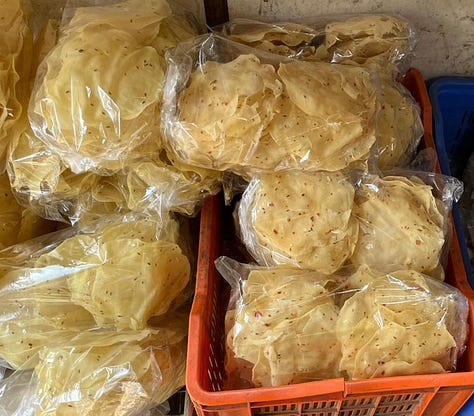
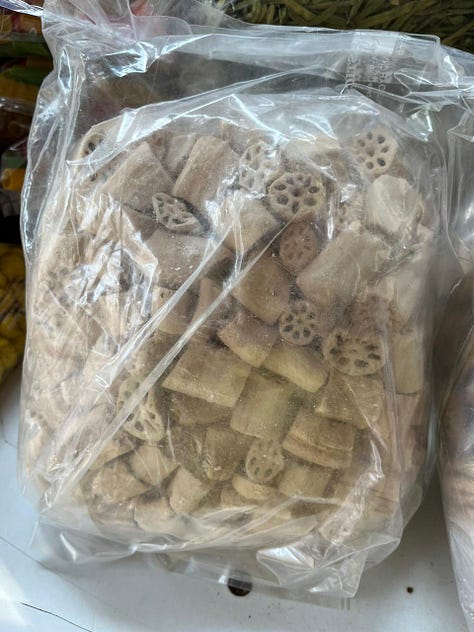
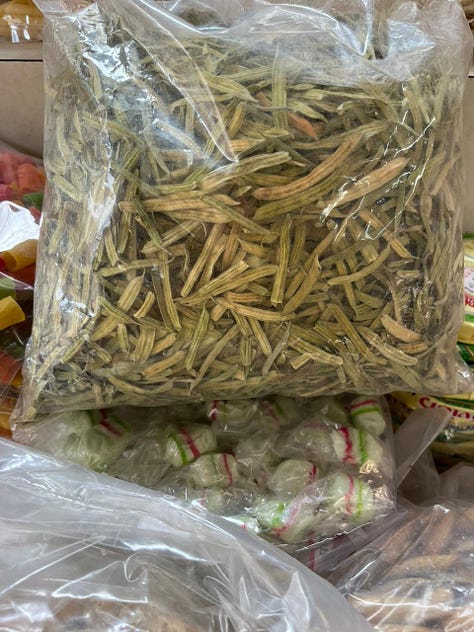
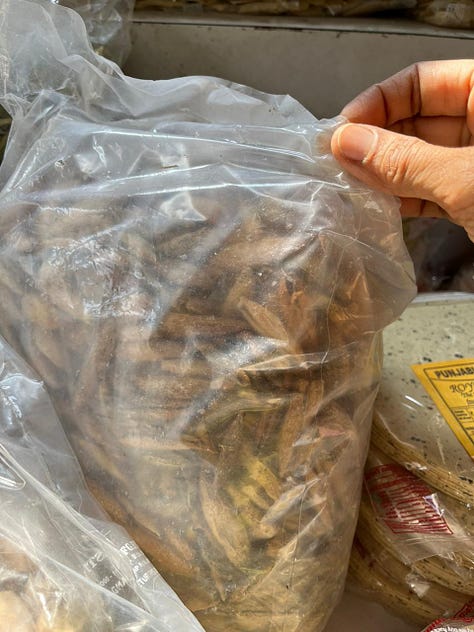
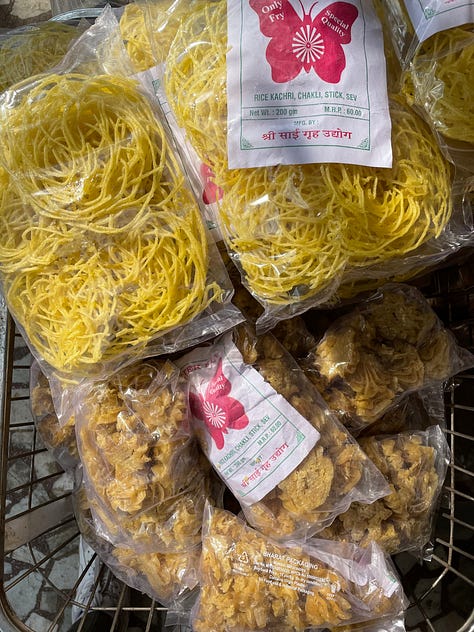
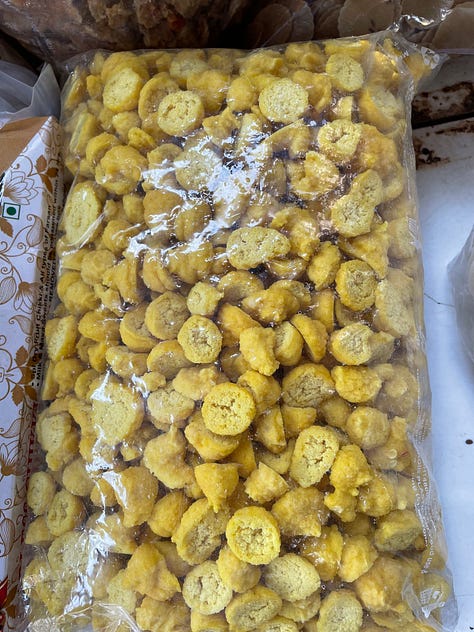
Growing up, I was surrounded by classmates in school who could proudly identify their family lineage, place of ancestry, foods typically consumed in their families and most importantly, speak their native tongue. Where my knowledge was restricted to tracing the cities my great-grandparents migrated to from Sindh, theirs was abundant in trips they were able to take to their hometowns or cities. I have long grappled with understanding my Sindhi identity, often feeling like I don’t have one because I can’t read the script nor speak the language fluently. Nor do I subscribe to the stereotypes imposed on our community of being stingy businessmen with a penchant for gold (no thanks to Bollywood). However, after reflecting on my trip to Ochi, I realised that both the shop and I have the Sindhiest trait of all time.
Pre-partition Sindh was in constant flux of new traders and rulers that have contributed to its cuisine wherein new ingredients such as tomatoes, potatoes, cardamom, dried fruits and nuts to name a few have all evolved to become staples in Sindhi kitchens. The post-partition era witnessed the addition of more West and South Indian ingredients in Sindhi kitchens, like tamarind or goa butter nut tree (called kokum in Hindi) that are used to add tartness to curries. Sindhis absorbed local ingredients into their recipes and used whatever was readily available to them to retain recipes of a lost homeland in a new home. Similarly, Ochi adapted to the needs of the Sindhi diaspora in Khar by outsourcing the preparation of snacks to local communities, to preserve a tradition that would otherwise be lost. In due course of time, newly adopted ingredients like tamarind or kokum found a spot on Ochi’s shelves due to growing demand and popularity. To be Sindhi is to be adaptable, to new forces of colonisation, to forced migration and to make strange ingredients familiar.
The last four years of my life have been an exercise in putting this Sindhi trait to the test and maybe that’s Sindhi enough for me right now. Identity is complex and no single person can have an innate knowledge of their culture to wear like a badge of honour. Maybe we’re all a culmination of traits that have become inbuilt in our DNA, passed down by our ancestors just waiting to be lifted out of the submerged water of our unconscious, like lotus roots. If you drop me into a Sindhi corner shop, this time around I can tell you exactly where they stock the peppermint digestives, which variety of rice flour snacks are my favourite and what season you can expect the arrival of fresh lotus roots.




